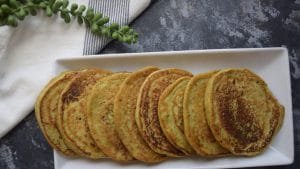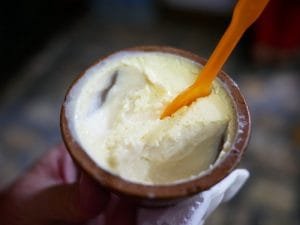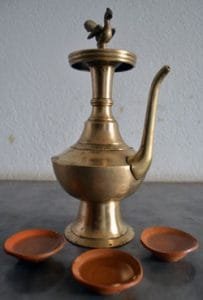Newari cuisine is one of Nepal’s most vibrant and flavorful food traditions, deeply rooted in the culture of the Newar community. This indigenous group, native to the Kathmandu Valley, has developed a diverse and unique culinary heritage that showcases a mix of bold spices, rich flavors, and intricate preparation methods. From street food stalls to traditional Newari eateries, this blog explores the must-try dishes, the best places to eat them, budget considerations, and why Newari cuisine is a must-experience for every traveler visiting Nepal.
A Brief Overview of Newari Cuisine
Newari cuisine is an integral part of the Newar culture, often tied to festivals, rituals, and family gatherings. The food features an assortment of meat, lentils, vegetables, fermented foods, and spices that create a rich and diverse dining experience. A traditional Newari feast, known as “Bhoj,” is a grand affair where multiple delicacies are served on a banana leaf.
Key Characteristics of Newari Cuisine
- Use of local ingredients like beaten rice, buffalo meat, and fermented vegetables.
- Fermented foods and drinks such as “Aila” (Newari alcohol) and “Gundruk” (fermented leafy greens).
- Spicy and flavorful dishes enhanced by unique spices.
- Balanced meal structure incorporating proteins, carbs, and fresh herbs.
Must-Try Newari Dishes
Here are some essential Newari dishes that every food enthusiast should try when visiting Nepal:
1. Yomari
A traditional sweet dumpling made from rice flour dough and filled with jaggery and sesame seeds. This dish is particularly popular during the “Yomari Punhi” festival.
The dish holds deep cultural and religious significance for the Newar community. It is not just a special dish but also an integral part of the Yomari Punhi festival, which marks the end of the harvest season and is dedicated to honoring the goddess of harvest. During this time, families come together to prepare and share Yomari, celebrating the prosperity and good fortune of the harvest.
How is Yomari Made?
Preparation of Dough: The dough is made by mixing rice flour and warm water until it forms a smooth consistency. This is then molded into a shape resembling a fish or horn.
Filling: The filling is made by melting jaggery and mixing it with sesame seeds or other ingredients, depending on the region or personal preference.
Steaming: The prepared dumplings are then steamed until the dough becomes soft and chewy, and the filling inside melts to perfection.

2. Samay Baji
A signature platter that includes beaten rice (Chiura), buffalo meat (Chhwela), boiled eggs, black soybeans (Bhatmas), and spicy potato salad (Aalu Wala). It is often served during special occasions and celebrations.
Samay Baji is a combination of various components, each with its own unique flavor and texture. The platter typically includes:
Beaten Rice (Chura): The base of Samay Baji is beaten rice, which is a key element of many Newari dishes. It is soft, light, and acts as a perfect complement to the other components.
Fried Lentil Patties (Bara): These are small, crispy, deep-fried lentil patties made from a mixture of ground lentils, spices, and herbs. They add a crunchy texture to the dish.
Aloo (Potatoes): Soft, boiled potatoes, often spiced and fried, are included in the dish for added flavor.
Achar (Pickle): A spicy, tangy pickle made from ingredients like tomatoes, green chili, and ginger is an essential part of the dish, giving it a zesty kick.
Boiled Egg: A hard-boiled egg is often included as a source of protein and a garnish for the dish.
Chicken or Buffalo Meat: In some variations, particularly during special occasions, marinated chicken or buffalo meat is included, often served as a curry or in small pieces.
Yoghurt: A dollop of yoghurt is also added to balance the spicy and tangy flavors with some creaminess.

3. Chhwela
Spicy grilled buffalo meat, typically marinated with garlic, ginger, mustard oil, and various spices. It is a key component of Samay Baji and pairs well with beaten rice.
How is Chewla Prepared?
Soak the Beaten Rice: Begin by soaking beaten rice (chura) in water for a short time to soften it.
Add Yogurt: Mix the soaked chura with thick yogurt (dahi). The yogurt adds a creamy texture and enhances the flavor.
Sweeten: Add sugar or jaggery to sweeten the dish. Jaggery provides a more traditional and earthy flavor.
Garnish: Optionally, you can garnish the dish with chopped fruits, nuts, or a sprinkle of cardamom for extra flavor.
Serve: Serve chilled or at room temperature for a refreshing treat.

4. Bara and Wo
Lentil-based pancakes, similar to South Indian vadas, served either plain or with a topping of eggs or minced meat.
Bara:
Bara is a traditional Nepali dish made from lentils, popular in the Newar community.
Preparation:
Soak black lentils (urad dal) overnight.
Grind the soaked lentils into a smooth batter.
Add spices like cumin, black pepper, and turmeric for flavor.
Fry the batter in oil to form round, flat fritters.
Serving: It is typically served with aachar (pickle) or yogurt.
Wo:
Wo is another type of traditional Newari snack, similar to Bara but usually smaller in size.
Preparation:
Grind soaked black lentils to form a thick batter.
Fry the batter into smaller, circular pieces.
Often, chili and garlic are added for extra spice and flavor.
Serving: Wo is also served with pickles and is often enjoyed during celebrations.

5. Chatamari
Often referred to as “Newari pizza,” Chatamari is a rice crepe topped with minced meat, eggs, and vegetables.
Preparation:
Prepare the batter: Mix rice flour with water to create a thick, pourable batter.
Cook the base: Pour the batter onto a hot, greased pan or griddle and cook until the edges start to crisp.
Add toppings: Spread ground meat (or vegetarian options), chopped vegetables, and spices over the cooked base.
Cook further: Let it cook until the toppings are cooked through. Optionally, crack an egg on top to enhance flavor.
Serving: Chatamari is served hot, often with a side of chutney or pickles. It can be eaten as a snack or a meal.

6. Juju Dhau
Also known as “King Curd,” this thick, sweetened yogurt is a specialty of Bhaktapur and is made from buffalo milk.
How Juju Dhau is Prepared:
Milk Boiling: Fresh buffalo milk is boiled to create a thick consistency.
Cooling: The milk is allowed to cool to a lukewarm temperature.
Starter Culture: A small amount of previously prepared yogurt (starter culture) is added to the cooled milk.
Fermentation: The milk is then left to ferment in a warm place for several hours, allowing it to thicken and develop its distinct flavor.
Serving: Juju Dhau is typically served in traditional clay pots and can be garnished with sugar or honey for added sweetness.

7. Aila
A traditional homemade Newari alcoholic beverage, often served during festivals and special events.
Ingredients: Rice or millet, water, and a starter culture (usually from previously brewed Aila or a specialized yeast).
Fermentation: The rice or millet is first washed, soaked, and boiled to prepare it for fermentation.
Inoculation: The boiled grains are mixed with the starter culture to kick-start the fermentation process.
Fermentation Time: The mixture is allowed to ferment for several days, typically around 3 to 7 days, depending on the desired alcohol content.
Straining: After fermentation, the liquid is strained to separate the solid grains, leaving behind the brewed Aila.
Serving: Aila is often served in small cups, sometimes accompanied by local snacks.
This simple yet flavorful drink is an integral part of many Nepali cultural gatherings.

8. Gundruk and Sinki
Fermented leafy greens used in soups and curries, adding a tangy and savory flavor.

9. Kachila

10. Lakhamari
Lakhamari is a popular Newari sweet made of flour, sugar, and ghee, often shaped into round or square pieces.
Preparation: It is made by mixing flour and sugar with ghee to form a dough. The dough is then rolled out, cut into shapes, and deep-fried until golden brown.
Texture: Lakhamari has a crispy exterior with a soft, slightly chewy interior.
Flavor: The sweetness comes from the sugar, and the richness of ghee enhances the flavor.
Occasions: It is commonly prepared during festivals, weddings, and other special Newari celebrations.
Serving: Often served as a snack or dessert during feasts and gatherings.

Best Places to Eat Newari Cuisine
To experience authentic Newari flavors, visit these renowned places in Nepal:
1. Bhaktapur
- Juju Dhau (King Curd) from Bhaktapur is a must-try.
- Newari eateries like “Peacock Guest House” offer traditional meals.
2. Patan
- “Honacha” is famous for its spicy Chhwela and Bara.
- “Yala Cafe” serves a variety of authentic Newari dishes.
3. Kathmandu
- “Newa Lahana” in Kirtipur is the best place to experience traditional Newari feasts.
- “Sasa Newari Restaurant” offers a variety of Newari dishes at an affordable price.
4. Kirtipur
- Known for home-style Newari cooking, featuring great views and a local ambiance.
- “The Village Cafe” provides traditional Newari meals using organic ingredients.
5. Local Festivals and Events
Many local food festivals in Kathmandu and Lalitpur offer Newari food stalls where tourists can sample various dishes at once.
Estimated Budget for Trying Newari Cuisine
The cost of experiencing Newari cuisine varies based on the type of dining experience you choose:
Street Food and Local Eateries
- Samay Baji Set: NPR 300 – 500 ($2.5 – $4)
- Bara/Wo: NPR 50 – 150 ($0.5 – $1.5) per piece
- Chatamari: NPR 150 – 300 ($1 – $2.5)
- Juju Dhau: NPR 100 – 200 ($0.8 – $1.5)
Mid-Range Restaurants
- Newari feast (multiple dishes): NPR 1000 – 1500 ($8 – $12)
- Aila (Traditional liquor): NPR 200 – 500 ($1.5 – $4)
Luxury Dining and Special Experiences
- High-end Newari dining experiences: NPR 2000 – 4000 ($15 – $30) per meal
Tourist Attractions and Cultural Experience
Newari cuisine is closely linked to Nepal’s cultural heritage. Some of the best places to enjoy the food while soaking in history include:
1. Bhaktapur Durbar Square
Explore ancient temples while enjoying Juju Dhau and Samay Baji.
2. Patan Durbar Square
Enjoy traditional Newari meals with a stunning backdrop of ancient architecture.
3. Kirtipur
A historical town with panoramic views and a strong Newari presence, perfect for food and culture lovers.
4. Kathmandu’s Ason and Indra Chowk
Experience authentic street food in the bustling local markets.
5. Special Newari Festivals
- Indra Jatra (September): A vibrant festival featuring Newari feasts and Aila drinking rituals.
- Yomari Punhi (December): Dedicated to eating Yomari.
- Gai Jatra (August): Features traditional feasts and celebrations.
Conclusion
Newari cuisine is more than just food; it is a representation of Nepal’s rich cultural heritage. Whether you’re trying a simple plate of Bara from a street vendor or indulging in a full Newari feast at a traditional restaurant, every dish tells a story of history, tradition, and community. For food-loving travelers, experiencing Newari cuisine is an unforgettable journey into Nepal’s indigenous flavors. So, make sure to add these dishes and dining experiences to your travel itinerary and immerse yourself in the rich gastronomic traditions of the Newar people!


